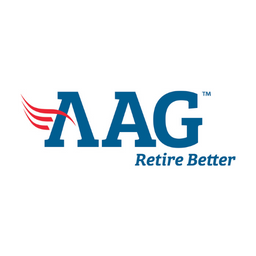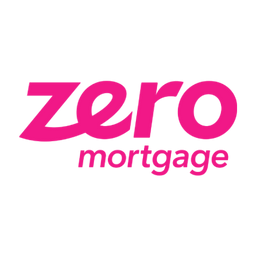Refinance mortgage rates are an excellent opportunity when you find yourself stuck with a long-term loan at higher interest rates. It allows us to adjust our debt to the current economic condition and reduces our monthly payments significantly, provided we have a strong credit history. Through refinancing we can restructure our long-term mortgage for its interest rate and duration. In this process, it is advisable to look for the APR values of all available lenders and not just their refinancing rate, as APR includes the interest rate, loan fees, and any other additional cost. The ultimate outcome of refinancing is saving some money.
Refinance Mortgage Rates: Why Refinancing?
Refinancing a mortgage is a technical term for applying for a new loan to replace your old home loan. The new mortgage rate charged by the lending bank is referred to as refinance mortgage rate and is usually lower than the original mortgage rate. Through this process, homeowners have the benefit of customizing their loan amount, including the new mortgage rate and the length of payment.
Generally, mortgage refinancing is a win-win situation for both the homeowners and the lending banks. There are several benefits associated with refinancing mortgages. To name a few is that it could get you a lower interest rate, a shorter term so that the mortgage can be completed sooner than the initial plan, a switch from adjustable-rate to a fixed-rate mortgage, or an option to cash out money from the house’s equity for spending it on other home-related expenditures, thus restructuring the term and the interest rate.
How to Refinance
Homeowners can opt for refinancing in three different ways:
- Rate and term refinancing
- Cash-out refinancing
- Cash-in refinancing
Calculating the refinance mortgage rate for each case takes a different approach.
For Rate and Term Refinancing
Take the case of Matthew (40), who received a 30-year term $200,000 mortgage at a rate of 6%. After five years, the interest rates have fallen to 4.5% and Matthew wants to benefit from this new lending rate. Having a perfect credit history and paying the monthly due of $1,200 on time, Matthew now has an outstanding amount of $186,110 for the next 25 years. In this scenario, he has two options for refinancing his existing mortgage. He can either pay the outstanding amount at the new lending rate for the next 30 years at a reduced monthly payment of $943 or he can reduce the term to 25 years, which increases the mortgage rate to 5% and pay $1,088 per month. Both the options are beneficial for Matthew, as he saves $257 and $112 respectively per month.
Cash-out Refinancing
Cash-out refinancing allows you to draw cash from your home’s equity so that you can use that cash for any purpose that you want. But first, you need to have sufficient equity. For example, Mike bought a house five years ago. Now, it’s worth $300,000 and he owes $200,000 on the mortgage. The equity is determined as the difference between the market value of the house and the mortgage. In our case it is ($300,000 – $200,000), which is $100,000. As the equity ends up significantly positive, Mike could refinance for more than $200,000, for instance, say $250,000. Through the refinance he can pay off the initial $200,000 while having an additional $50,000 to pay for renovating his home or other expenses. In the end, he is left with an additional $50,000 in equity.
Cash-in Refinancing
Cash-in refinancing is the opposite of the cash-out refinance method. It demands cash from the homeowner to pay down the loan balance owed to the bank. The benefit here is a lower mortgage rate, shorter loan term or sometimes it can be both. The general reason, however, why people opt for cash-in refinancing is that gives them access to reduce their mortgage rates which are only available at lower loan-to-value (LTV). For instance, refinanced mortgage rates are often less than 75% LTV, as opposed to an 80% LTV.
Refinance Mortgage Rates: Overview
Refinance mortgage rates are generally affected by two important metrics. One is the duration of the mortgage term. When you decide to pay off the outstanding loan in a shorter duration, the rate will get higher. On the other hand, if you decide to extend the term, the refinance rates are reduced, but you will end up paying more due to interest payments over the years. The second influencing factor is your credit score. This statement holds true especially if you opt out of cash-out refinancing. Cash-out refinancing will cause the bank to carry more risk, which is why this type of refinancing carries a more strict bank approval.
When we’re looking to compare refinance mortgage rates, we should not look at the interest rate only but rather the APR. This is because APR includes all fees and costs, not just the interest rate, and therefore a better way to compare refinance mortgage rates from different types of lenders.
Most banks usually offer two types of rates: fixed-rate mortgage (FRM) or adjustable-rate mortgage (ARM). A fixed-rate mortgage means that the loan uses a fixed interest rate throughout the entire term of the loan period. On the other hand, an adjustable-rate mortgage means that the interest rate changes throughout the loan term.
In most cases, ARMs are expressed with two figures. The first figure indicates the number of years the fixed rate is applied and the second figure indicates either the number of years a floating or variable rate is applied or the period in which it adjusts. There is no clear definition of the second figure. For example, in some cases, 2/28 ARM means a fixed rate for 2 years followed by a floating rate for the remaining 28 years. In other cases, 3/1 ARM means a fixed rate for 3 years followed by a variable rate that adjusts every year.
Refinance Mortgage Rates: The Bottom Line
Overall, there are ways in which one can maximize the advantage of refinance mortgage rates to their side, by avoiding a few minor pitfalls. It is best to discuss the matter with a financial adviser and see if the current refinance mortgage rates would be worth considering in accordance with the future goals and needs.










